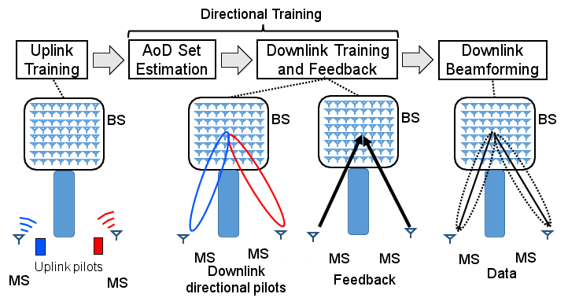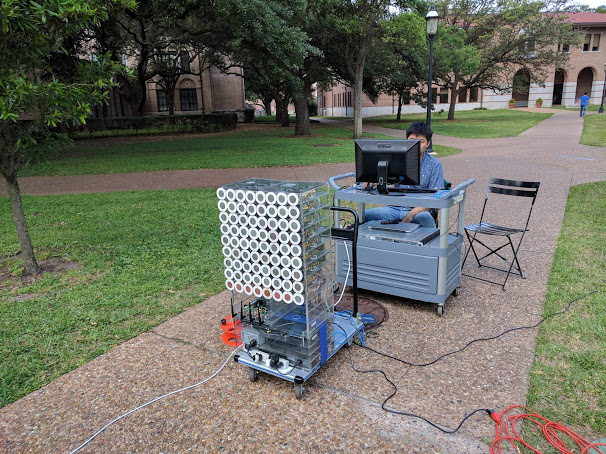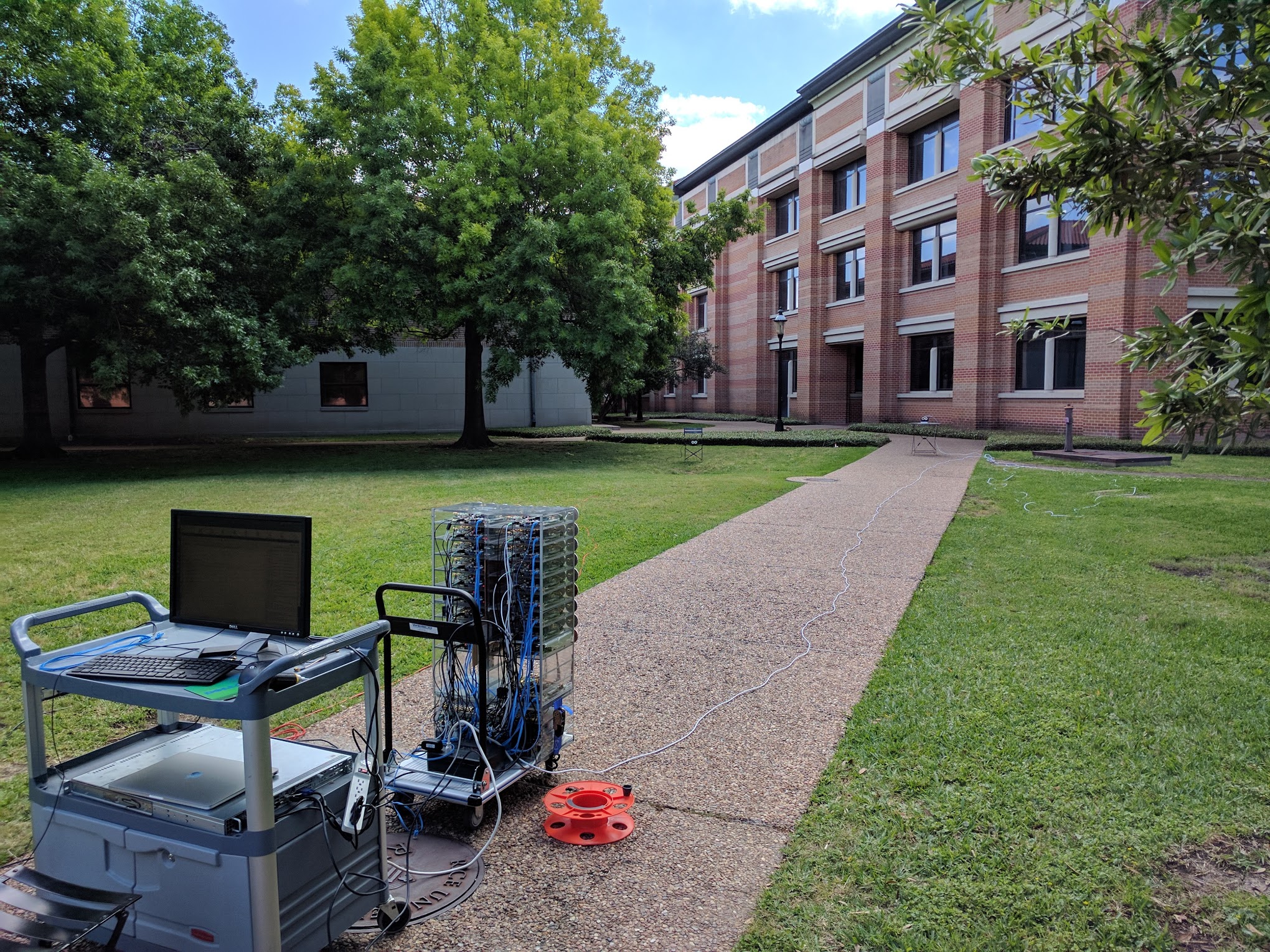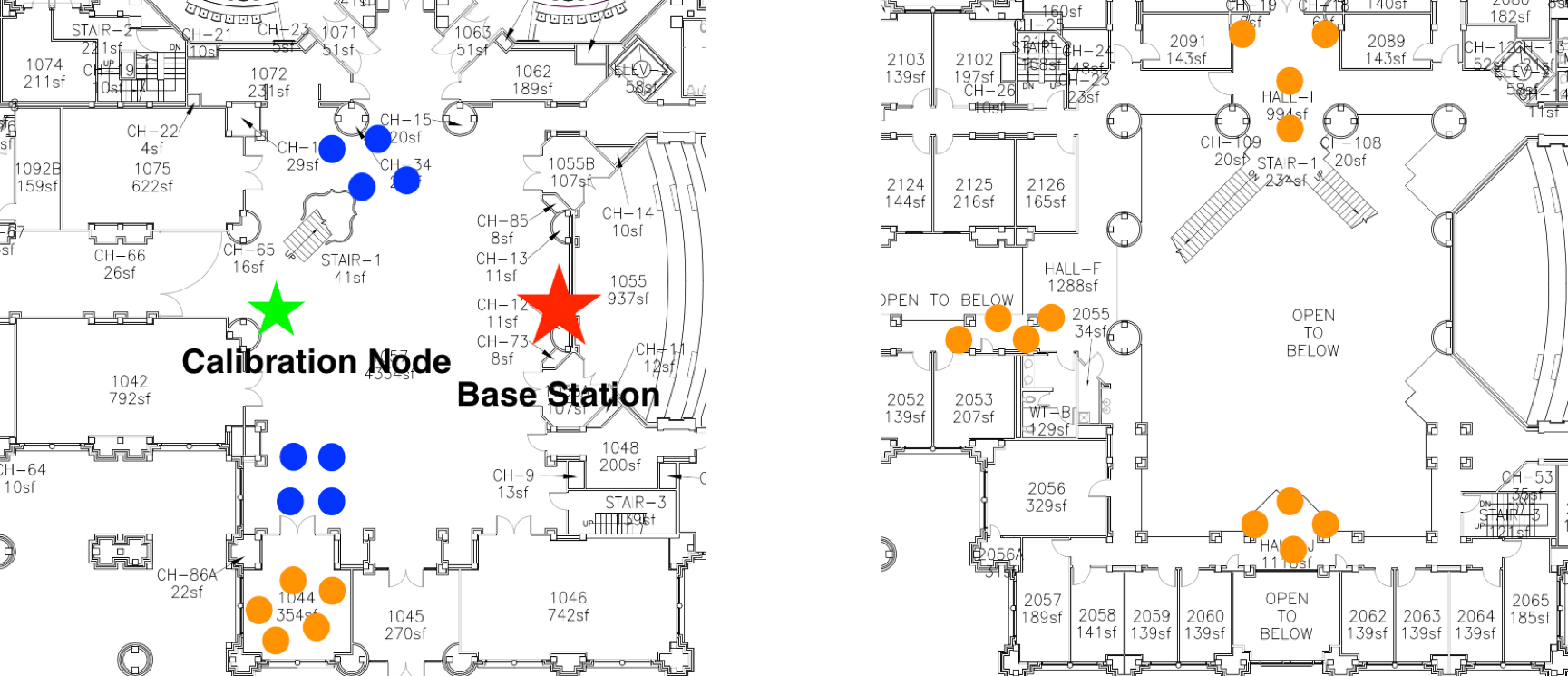FDD Massive MIMO

Project Dataset
For this channel measurement campaign we employed a 64-antenna base-station operating on two 2.4 GHz ISM channels, separated by 72 MHz. We collected data in both indoor and outdoor environments, including 8 indoor line-of-sight (LOS), 16 indoor non-lineof-sight (NLOS), 4 outdoor LOS and 21 outdoor NLOS mobile node locations. In each mobile node location, we measured CSI for up to 5000 frames in an outdoor environment and 250 frames in an indoor environment.
Datasets Description
The data for project was collected in both indoor and outdoor enviroments, as shown in the pictures and maps below. For more details, see this article.
These datasets were collected by Xing Zhang and Xu Du at the Rice University campus. For any questions about this dataset, please contact the paper authors or the RENEW team.
Before you use the datasets, please read the Data Copyright and License Agreement below.
Data Copyright and License
Rice University hereby grants you a non-exclusive, non-transferable license to use the data for commercial, educational, and/or research purposes only. You agree to not redistribute the data without written permission from Rice University.
You agree to acknowledge the source of the data in any publication or product reporting on your use of it.
We provide no warranty whatsoever on any aspect of the data, including but not limited to its correctness, completeness, and fitness. Use at your own risk.
You agree to acknowledge the following two publications:
- Xing Zhang, Lin Zhong, and Ashutosh Sabharwal, "Directional Training for FDD Massive MIMO," in IEEE Transactions on Wireless Communications, vol. 17, no. 8, pp. 5183-5197, Aug. 2018, doi: 10.1109/TWC.2018.2838600
- Xu Du and Ashutosh Sabharwal, "Massive MIMO Channels with Inter-User Angle Correlation: Open-Access Dataset, Analysis and Measurement-Based Validation," in IEEE Transactions on Vehicular Technology, 2021, doi: 10.1109/TVT.2021.3131606
NOTE: Downloading, obtaining, and/or using the data in any means constitutes your agreement with these terms.
BibTeX entry:
@ARTICLE{8368089,
author={Zhang, Xing and Zhong, Lin and Sabharwal, Ashutosh},
journal={IEEE Transactions on Wireless Communications},
title={Directional Training for FDD Massive MIMO},
year={2018},
volume={17},
number={8},
pages={5183-5197},
doi={10.1109/TWC.2018.2838600}}
@ARTICLE{9629284,
author={Du, Xu and Sabharwal, Ashutosh},
journal={IEEE Transactions on Vehicular Technology},
title={Massive MIMO Channels with Inter-User Angle Correlation: Open-Access Dataset, Analysis and Measurement-Based Validation},
year={2021},
volume={},
number={},
pages={1-1},
doi={10.1109/TVT.2021.3131606}}
Processed Data (Outdoors)
| # | File Name | Description | Size |
|---|---|---|---|
| 1 | channelDL.mat (channel 14) | Size: 64 (antenna number) * 52 (subcarrier number) * 25 (location number). First 18 locations: NLOS (with blockage, 19-21 with tree as blockage). Locations 22-25: LOS (without blockage). | 1 GB |
| 2 | channelUL.mat (channel 1) | Size: 64 (antenna number) * 52 (subcarrier number) * 25 (location number). First 18 locations: NLOS (with blockage, 19-21 with tree as blockage). Locations 22-25: LOS (without blockage). | 1 GB |
Raw Data
| # | File Name | Description | Size |
|---|---|---|---|
| 1 | indoor-fdd.tar.gz | Channel 1: LOS locations 1 to 8, NLOS locations 1 to 16. Channel 14: LOS locations 1 to 8, NLOS locations 1 to 16. | 4 GB |
| 2 | outdoor-fdd.tar.gz | Channel 1: LOS locations 1 to 4, NLOS locations 1 to 18, Tree locations 1 to 3. Channel 14: LOS locations 1 to 4, NLOS locations 1 to 18, Tree locations 1 to 3. | 70 GB |
Parser and Dependencies
| # | File Name | Description | Size |
|---|---|---|---|
| 1 | argos_trace_check_xing.py | Python-based parser and analysis tool. | 7 kB |
| 2 | python_argosv2.zip | Support functions used by the parser and analysis tool. | 31.7 MB |
Notes on Dataset
- (los locations, tree locations, nlos location 1-11): user 1 and user 2: calibration node; user 3 and user 4: mobile node.
- (nlos location 12-18): user 1 and user 2: mobile node; user 3 and user 4: calibration node.



